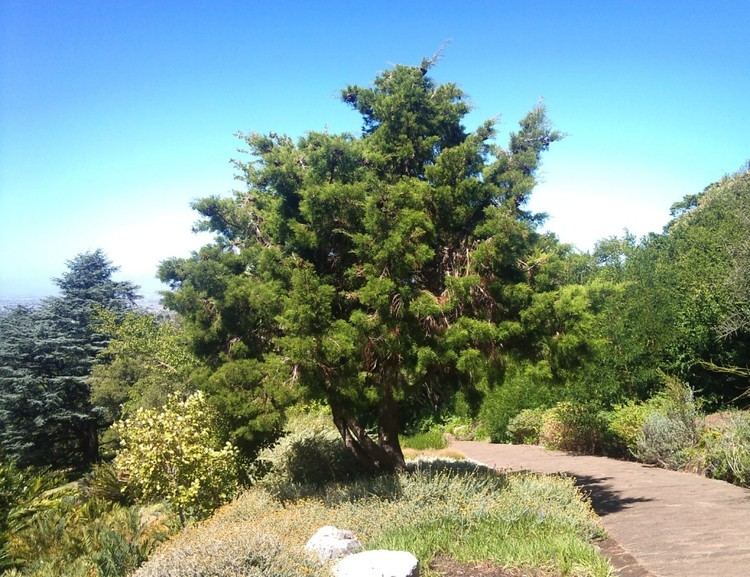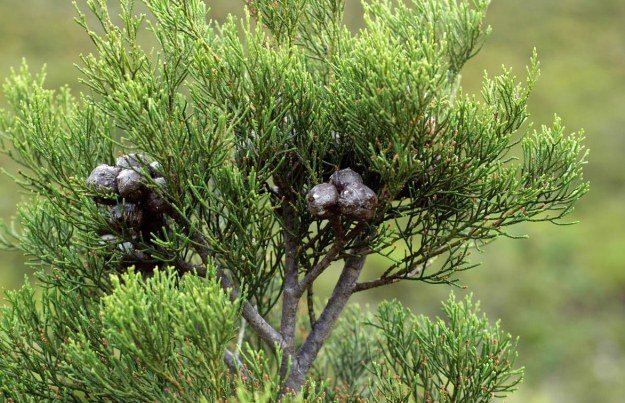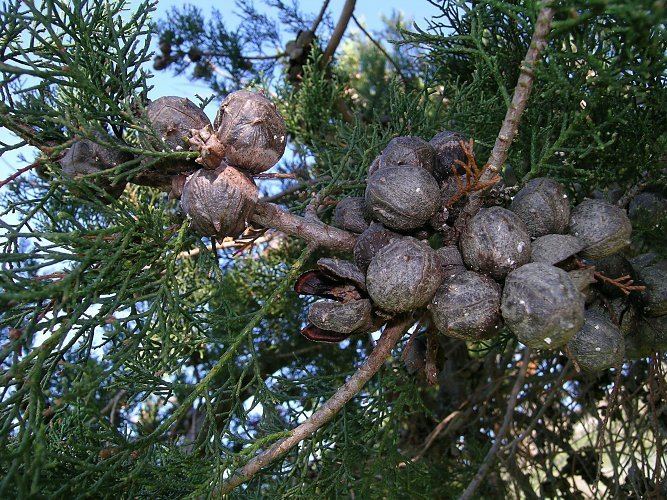Class Pinopsida Scientific name Widdringtonia | Division Pinophyta Order Pinales Subfamily Callitroideae Rank Genus | |
 | ||
Similar Widdringtonia nodiflora, Widdringtonia whytei, Actinostrobus, Diselma, Callitris pancheri | ||
Widdringtonia garden plants
Widdringtonia is a genus of coniferous trees in the Cupressaceae (cypress family). The name was Austrian botanist Stephan Endlicher's way of honouring an early expert on the coniferous forests of Spain, Capt. Samuel Edward Cook or Widdrington (1787-1856). There are four species, all native to southern Africa, where they were known in the past as "cedars" (to which they are not related) but are now known as African cypresses.
Contents

They are large shrubs or trees, reaching 5–20 m tall (to 40 m in W. whytei). The leaves are evergreen and scale-like, except on seedlings, which have needle-like leaves 1-1.5 cm long. The adult scale leaves are arranged in decussate opposite pairs in four rows along the twigs, while the juvenile needle leaves are arranged spirally.

The male cones are small, 3–6 mm long, and are located at the tips of the twigs. The female cones start out similarly inconspicuous, maturing in 18–20 months to 2–3 cm long and wide, globular to ovoid, with four, thick, woody scales, arranged in two opposite pairs. The cones mostly remain closed on the trees for many years, opening only after being scorched by a wildfire; this then releases the seeds to grow on the newly cleared burnt ground. In W. whytei the cones open soon after maturity to shed the seed without fire; this species is more sensitive to fire and only grows in moister situations where it is protected from fire. The best adapted to fire is W. nodiflora, which has the ability to re-grow from the roots, as well as by seed.

Widdringtonia top 9 facts
Species

One species is widespread in southern Africa, while the other three have restricted ranges, often occurring with or near to the widespread species.
The closest relatives of Widdringtonia are Callitris and Actinostrobus from Australia, which differ in their cones and leaves being in whorls of three, not opposite pairs.
Uses
The wood is light, soft and aromatic. It can be easily split and resists decay. It is used to make furniture, indoor and outdoor panelling, and fence posts. That of W. whytei was particularly valuable as it was available in large sizes, but this species is now endangered and no longer cut to any extent.
